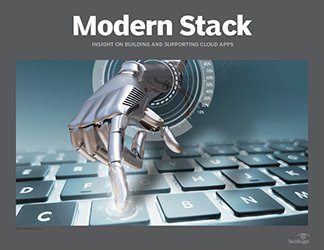PRO+ Premium Content/Modern Stack
Access your Pro+ Content below.
Embrace change to make the DevOps operating model succeed

This article is part of the Modern Stack issue of April 2018, Vol. 1, No. 1
The DevOps operating model is a partnership, and, like any partnership, the participants need to move a little to find a solution that benefits everyone. Because operational folks tend to focus on controlling change, they are in many ways the opposite of development groups, which embrace change. Over many years, IT operations professionals have seen both good and bad results from changes to software. While changes are usually more positive than negative, it's easy to remember a time when a change created a problem and easy to forget when everything went right. It's the ops team that deals with the consequences, so this history has soured operations teams on change. Logic would dictate that operations should move to the middle and work seamlessly with the development teams. However, logic falls short in changing minds when it comes to the fear of outages and upset customers. It's more than just outages. Operations teams deal with configuration control and IT infrastructure library (ITIL). The change itself isn't always bad, but ...
Features in this issue
-
AI in software testing has arrived. Here's why robots rule.
AI promises to make software testing faster and much more accurate. New tools are available, but it will take time for artificial intelligence to become ubiquitous in testing.
-
Which software engineer skills matter? All of them
The ongoing developer shortage means employers face unique challenges when it comes to hiring. LinkedIn's Sarah O'Brien offers insight into how developers behave and what they're really looking for.
Columns in this issue
-
Bots know better: Maybe AIOps tools should drive your stack
As more IT tool vendors add AI capabilities, organizations are speeding up delivery and cutting waste, but a lack of integration and trust is holding back the intelligent stack.
-
Serverless technology obfuscates workflows, performance data
Serverless and microservices reshape the application stack into something that looks like a swath of stars in the sky. How do you find a slow, misconfigured component in this interconnected galaxy?
